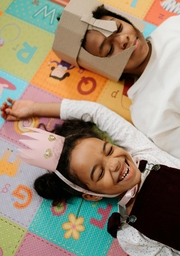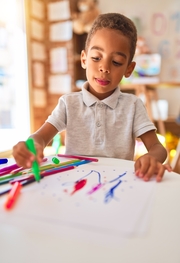The Family Digital Detox Challenge: Reclaiming Online Privacy
In the hustle and bustle of online life, it seems like families are riding a never-ending wave of pings, posts, and updates. While this relentless digital tide keeps us connected, it also leaves a trail: the digital footprint. Sharing too much can invite unwanted snoops and serious cyber threats right to our virtual, and sometimes even physical, doorsteps.
Erasing your digital footprint is becoming increasingly important for families.
It’s becoming increasingly important for families to take a step back every now and then to reevaluate the way we handle our online presence. One effective way to do this is by hitting pause on all things digital. To succeed, it’s important to approach the process not only as a digital detox but also as a clean-up of those footprints we’ve already left behind.
Challenges of Embracing a Digital Detox
You’re probably not even aware of just how much time you and your family spend online each day. On average in the United States, adults spend almost 7 hours online. Hitting the pause button at this time, even for a short period, may come with some challenges.
Here are a few you and your family might face:
Smartphone withdrawal
Our smartphones are practically glued to our hands these days. The thought of not being able to reach into your pocket and check your phone can feel almost out-of-this-world. This level of habit (and addiction) makes cutting down on screen time tough and shakes up the way you communicate with friends and family. Expect a little bit of early resistance at this stage.
Fear of Missing Out (FOMO)
Social media platforms play on our fear of being left out, and it’s what keeps us coming back time and time again to online communities. When you take even a brief break from social media, it can start to make you feel as though you’re out of the loop.
Rallying the Troops
If you plan on getting everyone in the house onboard for a digital detox, understand this is no small feat! We’re all different, and as such, we all go online for different reasons. What might be easy for you to give up may not be so easy for other family members. This can quickly lead to arguments and a sharp drop in motivation for the initiative. The key here is to support one another and foster deep understanding between all family members.
Make it a Habit
A digital detox isn’t like that one time you didn’t eat carbs for a day, it needs regular space on your calendars if you’re serious about changing your pixelated ways. Patience is key, as is empathy and coming together with one goal in sight. When you detox as a family, real change starts happening in creating healthier digital boundaries at home.
Steps for a Successful Family Detox
The first step is to “gather and guide.” Call everyone together for a family meeting and go through every online nook and cranny. Discuss which online platforms everyone is using and decide whether they’re actually worth your while. Some accounts might be vital; others are probably just taking up space. The goal is to shrink that digital shadow we’re all casting.
Second, clear out the cobwebs – delete those old accounts you’ve outgrown or just gotten bored of.
Step three is to fortify and lock things down privacy-wise on what remains of your online world. For social media, this means locking profiles, changing settings from public to private, and if need be, removing your comments from public posts.
And finally, it’s time to unplug and reconnect. Pencil in regular tech timeouts where screens go dark, and you light up real-world connections instead.

Teaching Kids the ABCs of Digital Safety
As parents, we’ve watched playground swings get replaced by screens and weekends playing sports together turn into marathons in front of the Xbox. For those of us who grew into technology instead of growing up with it, we’re well aware of the threats that young people face today.
The DQ Institute has surveyed kids around the world and highlighted some alarming statistics:
- Almost half of kids have experienced cyberbullying
- Close to 30% have been exposed to violent and sexual content.
- 17% have had risky offline contact with strangers they met online.
These figures are enough to make any family want to take a break from tech, but it’s also important to educate our kids on their digital health when they are online.
Stranger danger online is, unfortunately, only the tip of the iceberg. Parents should also teach their children about the dangers of oversharing, selfie culture, and the emerging threat of deep fake technology and AI voice cloning.
The “Be Internet Awesome” project is an interactive and fun way to let kids teach themselves about online safety. It’s also equally as important for parents to lead by example, especially when it comes to digital downtime.
Incorporating the Detox into Routine
Turning the digital detox into regular family rituals can work wonders for keeping everyone on track. Mark out the calendars with special no-screen days, unplug the home router together, and have offline activities planned in advance.
Whatever your digital detox strategy is, ensure it’s done together as a family and done routinely.
Pair up as accountability buddies to gently nudge each other back on track if the temptation to stray back to the screen gets too much for some. Fill up the time with activities that get everyone connected as a family, such as board games, hiking, reading, or even just relaxing.
Conclusion
When we all come together for a family digital cleanse, the perks are huge. Regular digital detoxing helps us dodge cyber risks and allows the family to learn to use tech without letting it get the best of us.
It’s often said that once something is posted online, it’s there forever. Fortunately, this generally isn’t always the case, and starts with smart decisions like the family digital detox and reclaiming your online privacy.
Consistently choose real-world play over pixels and you’ll be making connections without Wi-Fi and creating memories far richer than any status update could ever capture.









